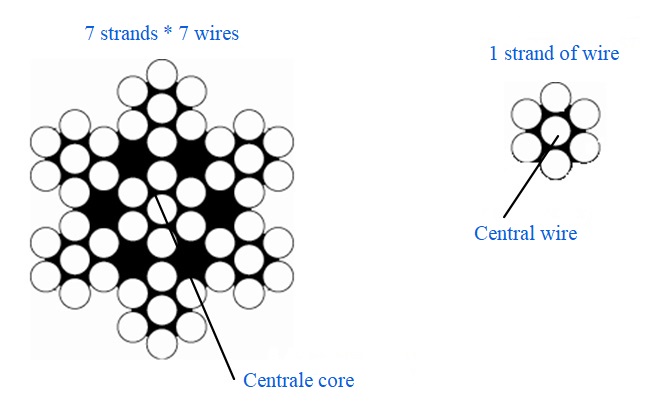
The key to choosing cable types is to accurately identify how it will be used and comparing it to the product specifications. The main selection criteria must include the elasticity, the trajectory and the breaking load suitable for the selected terminals. The design aspect can also be a selection criterion.
Beyond its intrinsic qualities, inalterability and strength, the main characteristics of a stainless steel cable are in the balance between its component alloys, its heat resistance, its elasticity and resistance to oxidation.
All INOX SYSTEM cables are produced using AISI316 / DIN 1.4401 standard micrographic structures and high carbon and chromium content which are essential components of stainless steel.
Our selection of cables meets almost any raw product requirements, but first and foremost finished and ready-to-fit finished product requirements. Namely, fitted with the suitable terminals for all needs.
Our main source is KOSWIRE® and a warranty certificate with the cable you order can be supplied on request.
We have extensive stock. Get in touch to get the best prices.
Strand:
Set of stainless steel metal wires wound around a central wire.
Cable:
A set of strands wound around a central metal core.

Medium braided appearance and a limited bend radius. They are mainly used for fencing, guardrails, hoisting, with swaged or swageless terminals and thimbled loops. They have low elongation values.
Strictly speaking, the minimum bend radius for a 7*7 cable of 40 times its diameter must be respected.
At lesser values, there is a risk of outer wires shearing at the bend
Fine braided appearance, their high flexibility makes them very easy to use. They can bear a high bending radius on small cross section cables. They are however, vulnerable to elongation.
Strictly speaking, the minimum bend radius for a 7*19 cable of 30 times its diameter must be respected
At lesser values, there is a risk of outer wires shearing at the bend
Made of round stranded wire, they are smooth. They are only used for static linear applications without bends. Their high rigidity and very low elongation make them suitable for guying, rigging, tensioning and hangers.
Trajectory: this type of cable can only be only straight, never curved.
They have an original look and are composed of flat wire strands and are ultra-smooth.
Very rigid, they have minimum stretch and a high breaking load.
Architecture, design furniture, interior railings but also rigging and guy ropes are its main applications.
Trajectory:this type of cable, which has even less tolerance than the previous cable is only used straight, never bent.
Designed for specific uses, appearance or protection (railings), a certain range of cables can be PVC coated. They are available by the metre or in thin products with the selected terminals. Available in white (other colours on request).
- Do not transport the cable reel using a forklift truck as the fork edges could damage it.
- If you want to prevent your cable from being altered by condensation in storage: Protect it, ....
- Furthermore, make sure that there are no works in the vicinity, as dust particles that are not visible to the naked eye may be deposited on the strands and oxidise them over time.
- When your cable is wound into a reel, unwind it using a reel stand or a support shaft.
- Also avoid dragging the cable along the ground.
- If the cable has been deformed during winding, it will need to return to its original shape after cutting.

